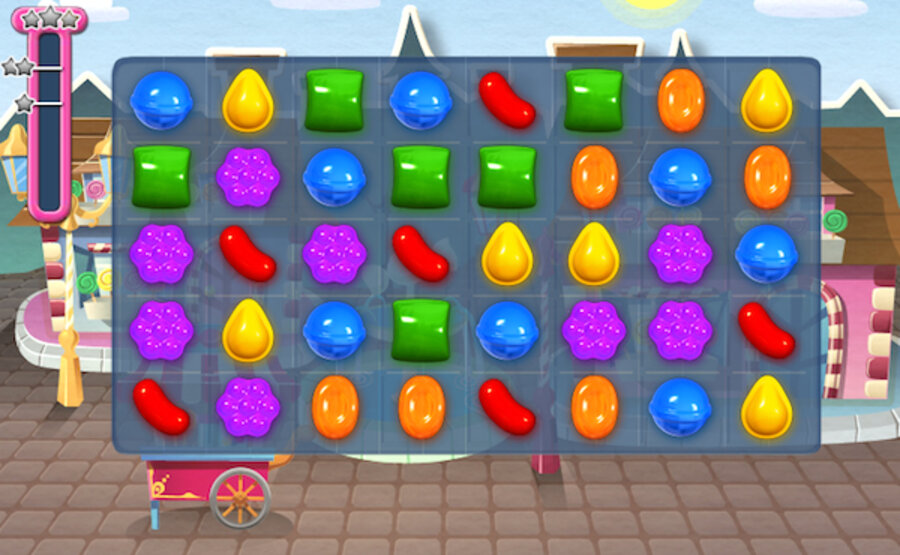In-app purchases: not popular with gamers
Loading...
The app markets are filled with so-called "free-to-play" or "freemium" games, and it's no wonder: the most popular free games, like Candy Crush Saga, can rake in millions of dollars per day. These apps generally make money through a combination of advertising and in-app purchases, in which players are encouraged to pay for items to improve their gaming experience.
However, a recent survey from analytics and app marketing firm Swrve found that most people aren't spending all that much on in-app purchases. Instead, "about 0.15 percent of mobile gamers contribute 50 percent of all of the in-app purchases generated in free-to-play games," VentureBeat reported. In truth, these microtransactions seem to drive most gamers crazy. So why do game developers keep including in-app purchases, if only a small number of gamers are spending a lot on them? Are we stuck with microtransactions forever, or is there another way? Read on as we take a hard look at this trend in mobile gaming.
Shocking: In-App Purchases Aren't Popular with Gamers
Ask a gamer what they think of microtransactions in freemium games, and you'll probably hear a tirade. Citing EA's Dungeon Keeper game, in which players can pay to have minions dig holes faster, blogger Thomas Baekdal said in-app purchases are hurting gamers: "What EA has done here has nothing to do with gaming, and the same is true for pretty much all other 'free-to-play + in-app purchase' games. We don't have a mobile gaming industry anymore. We have a mobile scamming industry."
It's worth noting that so-called "real" game studios aren't immune to the lure of microtransactions, either. Big name game studios have come under fire recently for walling off sections of release-day game content behind DLC, as well as including in-game microtransactions. The Xbox One's launch line-up includes a ton of microtransaction content, and Microsoft Studios chief Phil Spencer said they'll be watching closely to see if gamers actually bite on these extras. "And if fans don't like a micropayment? Don't buy it. Spencer said that he's making sure that all of the Xbox One game includes feedback mechanisms that allow Microsoft to closely track what gamers buy," Kotaku reported.
Interestingly, the Swrve survey mentioned above showed that the cash cow mobile gamers may be losing patience with in-app purchases, too. "Only 1.5% of active players surveyed in January actually made a purchase in that month," according to VentureBeat. If interest in microtransactions is waning, then it might be time to look at the alternative.
We Want Free Games, and That's a Bad Thing
It's clear that in-app purchases are an evil in mobile gaming right now, but are they a necessary evil? Some industry experts say yes. Why? Because mobile gamers want free games. Flurry, a mobile advertising analytics firm, found that 90% of all the iOS apps in use in 2013 were free. The firm found that Android users were even less likely to pay, with the average price paid for an Android app coming to just six cents.
To recover the cost of developing an app without using ads or in-app purchases, most devs face a vicious cycle where they must raise the price to the point that no one will buy the app. As the blogger at Sealed Abstract explains, "You see all sorts of people who would 'gladly spend' $5 or $10 for some game. Very few people are thinking about $40, $60, or $80. That is the kind of pricing it would actually take."
The Future of Free-to-Play Games
Gamers aren't the only ones questioning the ethics of free-to-play games these days. In January, Apple reached a settlement with the Federal Trade Commission that forced the company to refund at least $32 million to parents. Kids were making millions of dollars worth of in-app purchases because parents didn't have to enter their Apple password for each microtransaction. According to CNN Money, "one consumer complained to the FTC that her daughter had spent $2,600 in the app Tap Pet Hotel."
This week, Apple and Google will speak to the EU's European Commission about in-app purchases in freemium games. According to CNET, "the EC will specifically assert that free games 'should not mislead consumers about the true costs' and 'not contain direct exhortations to children to buy items.'" While no direct action has yet been taken to regulate free-to-play games, it's clear that governments in the US and abroad are beginning to pay more attention to these apps.
Whether you're a developer arguing in favor of in-app purchases or a gamer crying foul, there's no denying that these microtransactions are still a profitable part of the mobile gaming market. While 0.15% of gamers might be delivering 50% of the revenue, the other 50% of in-app purchase money is coming from gamers who only buy a few things in these purportedly free games. Developers are not making these apps out of the goodness of their hearts, and there's obviously a huge market for free games. The profits will have to come from somewhere, which means we're stuck with in-app purchases — for now.
Of course, if you're tired of trading your cash for pixels, you can get the best deals on actual goods and services on your phone with the DealNews app for iOS or Android.
Marcy Bonebright is a features writer at Deal News where this article first appeared: http://dealnews.com/features/In-App-Purchases-on-Free-Games-A-Necessary-Evil-But-Few-People-Are-Paying/992640.html







